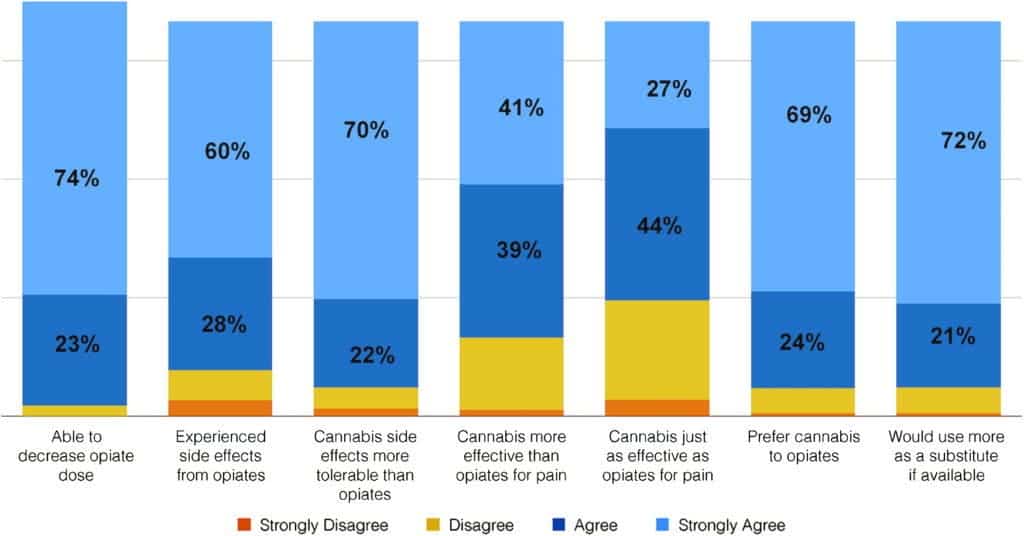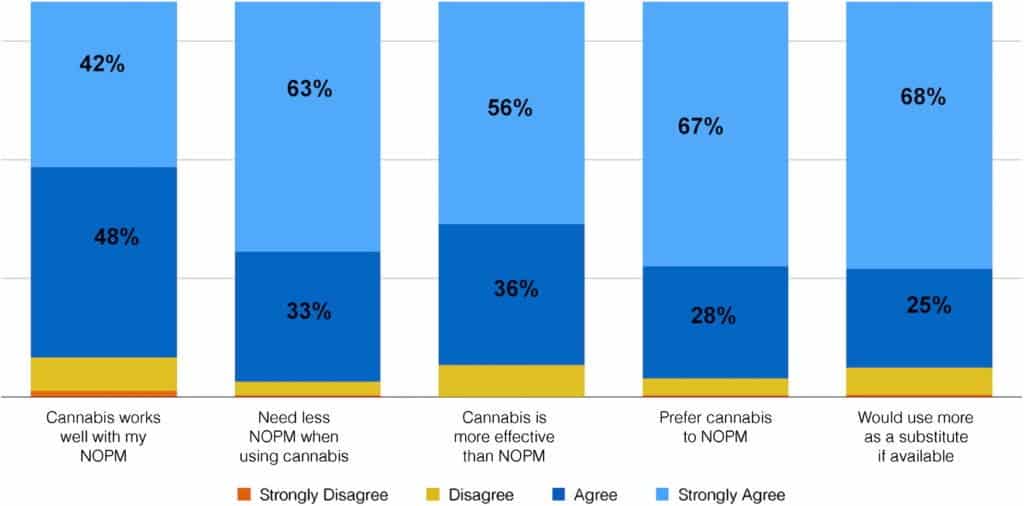Given a choice between opioids and medical marijuana to keep pain under control, an overwhelming majority of patients who have used both would pick the latter, saying it works just as well and with fewer side effects, a new survey shows.

The study didn’t track actual drug use or their efficacy but rather aimed to get a feel for how patients would behave given a viable alternative to opioid medication. Such insight into patient choice is critical today, as the US struggles under its worst drug epidemic in history — the Centers for Disease Control and Prevention reports that opioids killed more than 33,000 Americans in 2015. The CDC further estimates that some 91 Americans lose their lives because of the highly addictive drugs every day.
Options not Overdose
But the findings give cause for hope than things can change. The team, led by Amanda Reiman of the University of California, Berkeley, collaborated with HelloMD, an online community for medical cannabis patients (they weren’t funded by HelloMD) to survey 2,897 medical cannabis users on how they use opioid medicine and weed to manage chronic pain. Of the participants, 63% were already using marijuana for pain-related conditions at the time of the survey, and roughly 30% (841) reported using an opioid currently or in the past six months.
Of these 841 patients, 92% agreed or strongly agreed that they would prefer cannabis over opioids for their condition. Funnily enough, slightly more (93%) agreed or strongly agreed that they’d go with cannabis if both options were available. About 71% say cannabis is just as effective in relieving their pain as opioids, and 97% said cannabis use helps them cut down on how many opioids are needed to keep pain levels under control.

The researchers found similar results when they asked about non-opioid pain medication use.

Literature backs up these participants’ opinion on the issue up to a point. Decades of research have shown that cannabis is effective in treating pain although not on the same level as opiates, and states where medical marijuana is available report fewer opioid overdoses and fewer opioid prescriptions than the rest. And since it’s virtually impossible to get a cannabis overdose, its use in conjunction with or in lieu of opioid medicine could help patients reduce opioid intake, avoid addiction, and in the end help save lives.
“Supporting the results of previous research, this study can conclude that medical cannabis patients report successfully using cannabis along with or as a substitute for opioid-based pain medication,” the authors write.
“[…] patients in this study who are using cannabis and opioids report that they are able to use less opioids and that cannabis presents less unwanted side effects than their opioid-based medication.”
The authors say that there are a few limitations with the study. For starters, they had to work with a self-selected group of cannabis users, so the data may be biased. It also doesn’t look at actual efficacy or use, just perceptions — which may be inconsistent and can be skewed.
Still, they believe the results warrant further work with marijuana as a “viable substitute for pain treatment.” Until such work is performed, they recommend working on what data we do have and provide patients with a choice between opioids and other treatment options to help reduce pain and risks at the same time.
“A society with less opioid dependent people will result in fewer public health harms,” they conclude.
The full paper “Cannabis as a Substitute for Opioid-Based Pain Medication: Patient Self-Report” has been published in the journal Cannabis and Cannabinoid Research.
Was this helpful?



